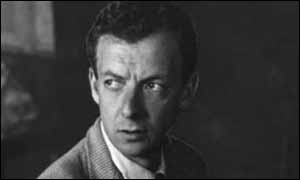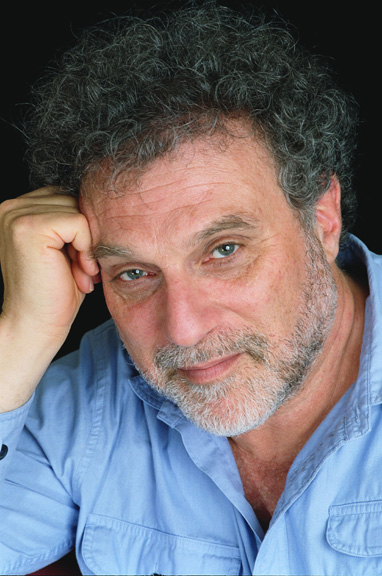
On the Friday before Thanksgiving, the Argento Chamber Ensemble took the audience at Symphony Space on a little transatlantic trip with an evening featuring four contemporary French composers: Fabien Levy, Gérard Pesson, Tristan Murail, and Philippe Hurel.
Of course for many readers, the phrase ‘contemporary French composers’ will evoke one word (especially with Murail being one of the composers in question) – spectralism. For those of you how aren’t familiar with the term, spectralism is an approach to composition that arises from the analysis of the partials of a particular sound or sounds (its spectrum). How this information relates to the music written naturally varies from composer to composer, but the results often have some relationship to the overtone series and often require the performers to navigate microtones and precise dynamic indications. Though spectral music has been around for 20+ years old in France now, it’s still making inroads with audiences in the United States. Indeed, the men and women of the Argento ensemble have helped pave many of these roads by featuring spectral music from both sides of the Atlantic in their concerts over the past six years.
On Friday night, however, the focus was squarely on the composers and their music rather than on the movement. Were it not for a few passing references in the program notes and the evening’s “Shades of Sound” title, listeners would’ve had little clue that the pieces presented belonged to a particular school. Even a listener acquainted with spectralism through its orchestral canon would have had reason to be surprised at what he heard. The only tendencies that the seven pieces on the bill overtly shared were attentiveness to detail and acute awareness of the sonic surface.
Hurel’s …à mesure opened the concert with a splash of tempered noise that periodically dissolved into octaves shared by the ensemble. Eventually the gyrations coalesced into a hocketed loop that then eerily settles into a conclusion.
Next came the U.S. premiere of Murail’s Les Ruines circulaires for clarinet and violin. Murail programmatically describes the piece as a mid-dream confrontation, and the image is apt. The music came to an intense gestural climax with the two instruments relentlessly climbing on top of one another only to tumble back down again and again.
The first half of the program wrapped up with the evening’s only electronic work, Levy’s Soliloque on Fabien, Tristan, Gérard and Philippe. This ‘meta-score’ (to use Levy’s terminology) takes samples of the other pieces with which it’s programmed and enmeshes them into a new purely electronic work (it also sticks the composers’ first names into the title – more info about it all here). It’s a neat idea, and it had some intriguing moments as its samples fluttered back and forth across the border of recognition. There was some nice spatialization too. Ultimately though, it suffered from sounding very Super Collider-y (perhaps an inevitable consequence since it was written entirely within the software).
The second half opened with my favorite work of the night. Tristan Murail is a composer of subtlety, and his C’est un jardin secret… for solo viola is a direct expression of that fact. Stephanie Griffin whispered her instrument into the piece by imperceptibly increasing the bow pressure. From that teasing opening, the piece enters into a sound world of timbre fused with melody. It’s gorgeous.
Pesson’s Rebus had the misfortune of following C’est, but it was the right piece to do so. The work is for flute, clarinet, violin, viola, and cello, and it takes Tavener’s In Nomine theme as its inspiration. In Rebus’s brief 2-minute span, the cantus firmus is spun into a series of bright, pleasant harmonies.
Swapping the viola for a trombone, Argento dug into Fabien Levy’s Risâla fî-l-hob wa fî’ilm al-handasa. The title is Arabic for “small treatise on love and geometry,” and the music is inspired by ornamentation in Islamic art. The first movement opened fiercely and then gave way to a second section that felt slow-motion-like in comparison. My favorite moments of the second moments arose from some interesting interplay between the bass clarinet and the trombone.
The night’s finale was Pesson’s Le Gel, par jeu, which the composer labels a danse macabre. The piece hops between some intense textures and scrounges through a few prominent quotes. Pesson cleverly replaces the traditional xylophone with a bass marimba that he uses to good effect. The whole thing loses a bit of steam about halfway through, but remains thoroughly listenable.
All in all, the concert was a testament to the diversity of the French new music scene and to Argento’s ability to show it off. Keep on eye out for the next Argento concert in January at Merkin.
Photo from Argentomusic.org

 Martin Bresnick turned 60 last month and he’s celebrating the event with two events at Zankel Hall this week. One piece will be on the Bang on the Can All-Stars program on Tuesday night and, on Saturday, the Yale School of Music will devote an entire evening to Bresnick’s music, including choral songs, a concerto for two marimbas, and a multimedia piece for solo pianist.
Martin Bresnick turned 60 last month and he’s celebrating the event with two events at Zankel Hall this week. One piece will be on the Bang on the Can All-Stars program on Tuesday night and, on Saturday, the Yale School of Music will devote an entire evening to Bresnick’s music, including choral songs, a concerto for two marimbas, and a multimedia piece for solo pianist.

 The
The  The International Society of Bassists wanted a new concerto for their favorite instrument, and they wanted orchestras to play the work rather than merely filing its name in the list of new works that they might think about some future year. With help of their members they formed a consortium of 15 orchestras to back the work, enabling each participating orchestra to list themselves as a co-commissioner, giving each a “premiere” (even if merely a local one) at a bargain price.
The International Society of Bassists wanted a new concerto for their favorite instrument, and they wanted orchestras to play the work rather than merely filing its name in the list of new works that they might think about some future year. With help of their members they formed a consortium of 15 orchestras to back the work, enabling each participating orchestra to list themselves as a co-commissioner, giving each a “premiere” (even if merely a local one) at a bargain price.